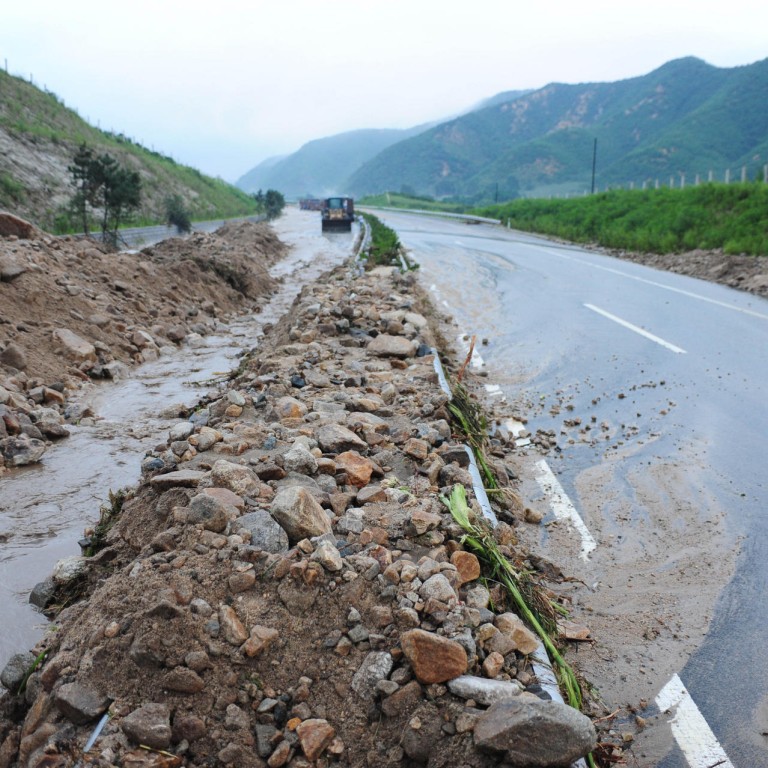
Rain-damaged roads cost billions
Heavy rain causes subsidence on highways across Gansu, landing government with huge bill for repairs
Sections of nearly all national expressways in Gansu province have suffered dangerous subsidence following two months of heavy rain, forcing the government to spend billions of yuan on urgent repairs.
Tens of thousands of maintenance workers have had to be mobilised to complete all repairs by the end of next month, the provincial transport department said.
The affected expressways include the G6 from Beijing to Lhasa ; G22 from Qingdao to Lanzhou ; G30 from Jiangsu to Xinjiang ; and the G75 from Gansu to Hainan . All are part of the core of the mainland's expressway network and are strategically important for freight transport. Two provincial expressways, S1 and S2, also suffered similar damage.
The subsidence has produced many large surface cracks and holes on the roads. Some sections have even collapsed, and several highways have been closed because they are no longer safe for passengers. Those still open have seen severe traffic jams. The damage had caused losses of more than 2.4 billion yuan (HK$2.94 billion) by the end of last month.
Gansu's transport department said that heavy rain was the main reason for the damage. Rainfall in June was 20 per cent higher than usual and in July reached a seven-year high of 70mm. Officials said that the subsidence was not caused by faulty construction.
Experts said soil conditions in Gansu were not suitable for expressway construction. Professor Yan Zhixin , director of the geo-engineering research institute at Lanzhou University, said yesterday that many parts of the province were covered by a thick layer of collapsible loess, which is formed by layers of windblown silt, and tended to soften and sink after rain even without the weight of buildings.
Engineers had devised methods to reduce the problem in highway construction, such as compacting the soil around the road base and building drainage pipelines to channel water away from the roads, "but no existing methods can completely overcome the problem," Yan said.
The problem is not confined to Gansu, and presents similar challenges to road builders in Shaanxi and Shanxi provinces, which straddle the 640,000-square-kilometre Loess Plateau.
Construction scandals also made the shaky expressways even more vulnerable in Gansu. Mainland media reported last year that the 8 billion yuan Tianshui to Dingxi section of G30 was plagued by cracks and holes only half a year after completion. In one part, drivers had to go over 30 kilometres of road that "seemed to be bombarded by artillery shells," according to a report by China Central Television.
An investigation by the provincial government in the wake of public outrage found that the construction company in charge of laying asphalt had used cheap, inferior materials, changed blueprints, rushed deadlines and lowered overall construction standards. But the company, after receiving a warning and repaving the highway at its own cost, kept its licence, according to No one went to prison for the scandal and details of the investigation were never made public.
The same stretch of highway was one of those that sank this year.
Zhao Jian , an economics professor at Beijing Jiaotong University, said the central government encouraged the construction of costly super-highways across the nation, regardless of whether they were suitable for local conditions or could generate sufficient economic benefits to pay for the cost of construction and maintenance.
"China has built more super highways than the United States, with a total length exceeding 81,000 kilometres last year," he said. "Their maintenance will become a heavy burden for our children."

